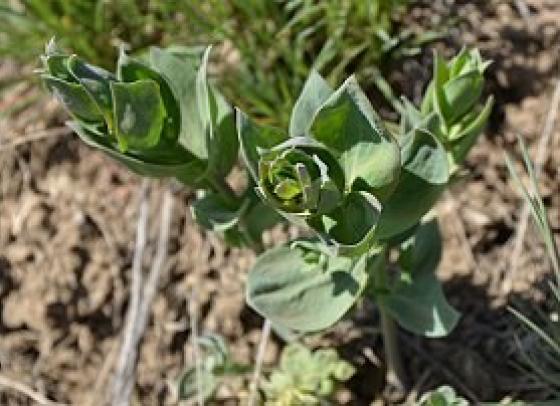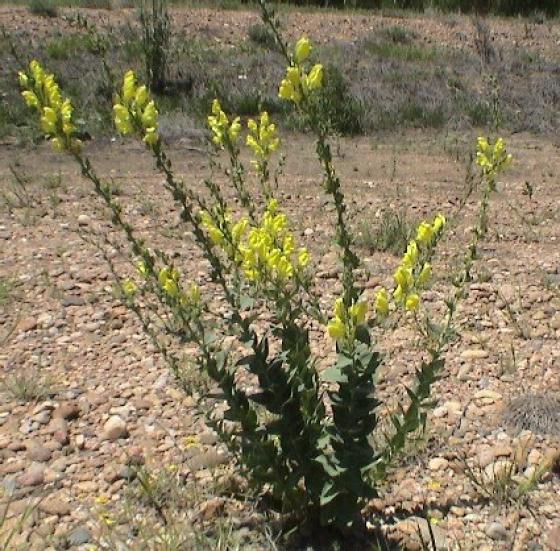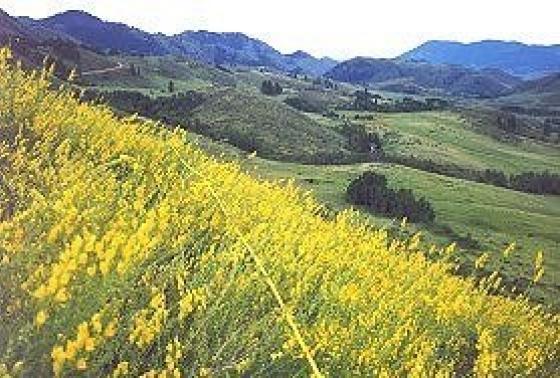
Scientific Name:Linaria dalmatica
Family: Scrophulariaceae (Figwort Family)
Other common names: Broadleaf Toadflax
Life-Cycle: Perennial that reproduces by seed and rhizomatous roots
Weed Guide > Dalmation Toadflax

Scientific Name:Linaria dalmatica
Family: Scrophulariaceae (Figwort Family)
Other common names: Broadleaf Toadflax
Life-Cycle: Perennial that reproduces by seed and rhizomatous roots
| Description | Bloom (varies by elevation) |
What to Do | When? | Invades Undisturbed Land | State Class |
|---|---|---|---|---|---|
| 2-3' stalks of yellow flowers atop clasping waxy blue-green leaves; stalks often form clumps, spreading via roots and seeds. | Bright yellow flowers, easily mistaken as snapdragons, about an inch long, with a little orange on top and a large spur on the end. | Hand pull seedlings and small populations; cultivate farmland repeated; get biocontrols for large groups. | May through August. | Yes. Prefers dry, rocky soil, and is most common along roads and old disturbed sites but easily invades all sorts of pristine habitats. | B |


See the whole “Toolbox of Weed Control Methods” for more details.